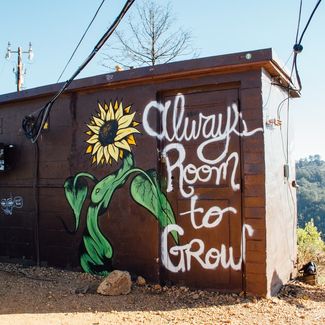
Kyle Glenn
Partner Content
The Originality Crisis And What You Can Do About It
It's your job to champion originality. Engine Creative chief strategy officer Gen Kobayashi and chief creative officer Billy Faithfull tell you how
27 October 2021
Cast your minds back to 2019. Before the upside down times, there was an IPA report that caused a stir of its own in Adland when it was presented at Cannes.
The IPA report written by econometrician, Peter Field, entitled 'The Crisis in Effectiveness' charted the worrying decline in effectiveness of creatively award-winning campaigns. Back in 2008 creatively award-winning campaigns were on average 12x more efficient in driving profitable returns on investment. Fast forward today and this multiplier effect has dropped to just 4x.
Marketers and advertising folk began asking themselves why this decline has happened. Was it the fault of awards juries, too focused on awarding CSR-driven work instead of old fashioned commercials? Were agencies distracted by new and shiny technological advances in favour of The Big Idea? Or maybe it was clients ever-diminishing marketing budgets, procurement coming home to roost?
Perhaps the problem is closer to home. Perhaps it’s a brand problem. Kantar’s annual 100 Most Powerful Brands report measures a brand’s power by tracking public sentiment on how “meaningfully different” each brand is in the eyes of the consumer. The entire database has seen yearly declines in ‘meaningful difference’ during the same period as the IPA’s report.
Brands are not seen to be meaningfully different in the mind of the public. Is it any wonder? Take a snapshot of many sectors and you can see there’s very little way in which people can tell brands apart.
And it’s not just advertising, look at brand design and you see a similar race to the same small space.
Customer Experience also seems to be plateauing, in digital platforms. We have optimised our way into a sea of same. [Image courtesy of Forrester 2018]
The industry is pumping millions into making brands look, feel and behave in the same way. We are not facing a crisis in effectiveness but a crisis of originality.
And originality stacks up. A recent study by the Journal for Advertising found that 70 per cent of consumers cited “originality” as the most important factor when judging creativity in advertising. More than “relevancy” or “appropriateness”. This just in... ‘real’ people care just as much about ideas they haven’t seen before as ECDs and CCOs.
Consumers, evidently, really do see the value in brands that are willing to do things differently. Kantar’s study of their 100 Most Valuable Brands database found that brands that were perceived to be both highly disruptive and different increased in brand value by 28 per cent, whereas brands that were low in disruption and differentiation declined by -5 per cent.
The behavioural bias called The Von Restorff Effect [image courtesy: Tom Roach] might point to WHY originality is effective. If you’re on the Byron Sharp bus, we’re all in the business of building memory structures. In 1933 psychologist Hedwig von Restorff showed that distinctiveness drives memorability, which predicts that when multiple similar things are presented, the one that differs from the rest is more likely to be remembered. Or to put it another way: cat, cow, rabbit, briefcase, dog, mouse, horse.
So perhaps being “right” is only half the answer. What is equally as important is spotting the original and embracing the unfamiliar.
Because creativity isn’t just about coming up with ideas, it’s about spotting them. Spotting them when they come tumbling out of your wandering mind. Or when the universe decides to collide two seemingly unrelated ideas that somehow just work.
Originality won’t come with 30 strategy slides before the big reveal. It is a timid beast, popping its head out of its burrow for the briefest of moments. Hesitate, wait for proof or affirmation from the room, and it slips out of your hands like a greasy eel.
Original ideas are flawed, feeble creatures. You can knock them over with a breath. Even the slightest, inconsequential rational argument to the contrary and they head for the canvas, like so much Deontay Wilder. Which is why committees are better at killing ideas than creating them.
If you’re on the receiving end of ideas, it’s your job to be a champion of originality, to spot potential when all around you run from it. A couple of years ago I passed a young creative team on the stairwell. How's that tricky Santander brief, I asked. “Well, we did have this thought that Santander sounds a bit like Ant & Dec, but that’s just stupid”. “No it’s not”, I said, and so began a very strange journey towards the most effective campaign we’ve produced for the bank.
The Bank of Antandec is not only populist gold, but also at the extreme end of originality and advertising. What does a bank do, with shallower pockets than its competitors in a market where most banking products are barely discernible from each other? Create the world’s first genuine real fake bank, fronted by Britain’s favourite double act. It defied logic, we pitched it as ‘so wrong it’s right’, and an ambitious client team spotted it and it paid off. And we have the Effie award to prove it.
Every agency has their north star. We call ours Truth & Friction.
What’s the enduring, authentic story we’re trying to tell? The Truth. What’s the most original, innovative, rebellious way we can tell it? It's designed to keep us honest, and if you want to outgun, outmanoeuvre, outsmart your competition, you could probably do with one yourself. Or prick up your ears when good people come to you with sincerity and say ‘Ok, bear with us on this one, but…’





